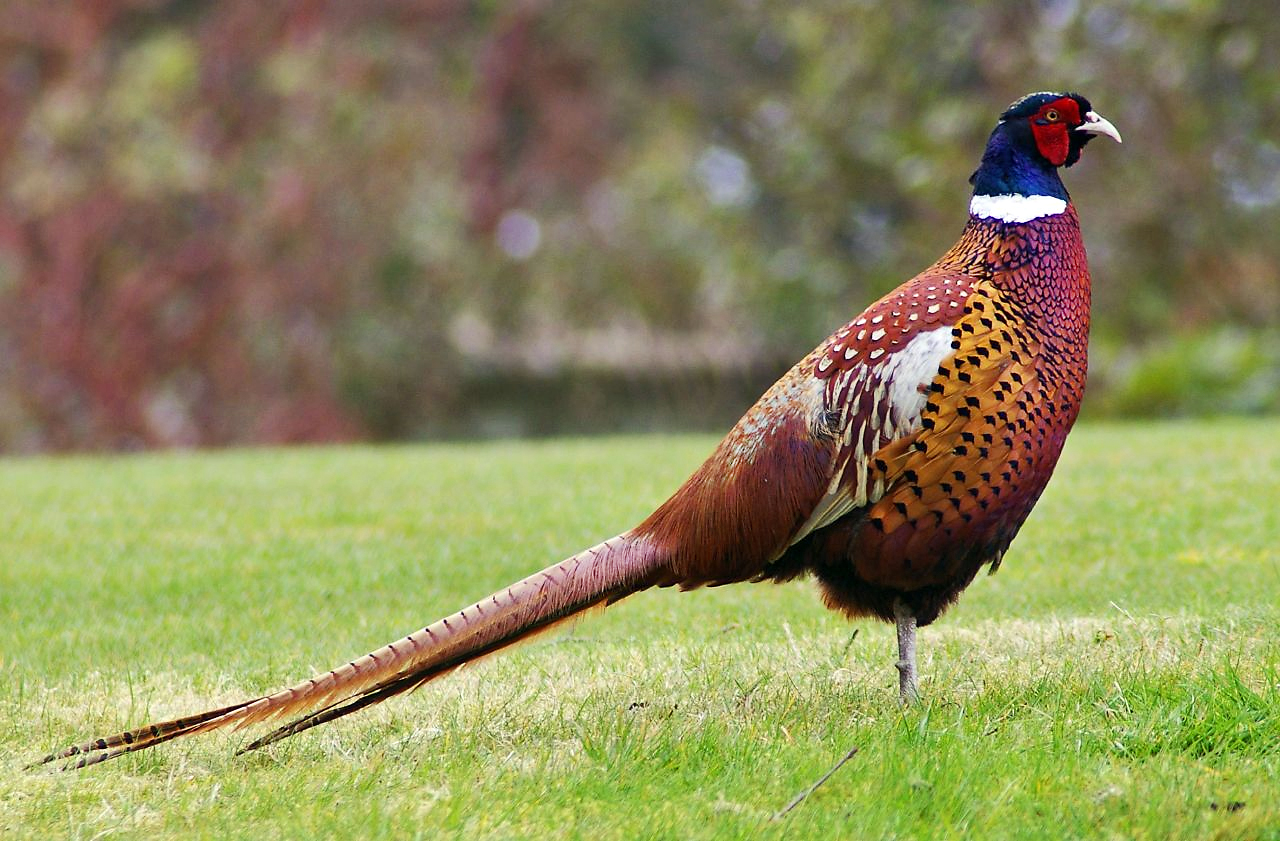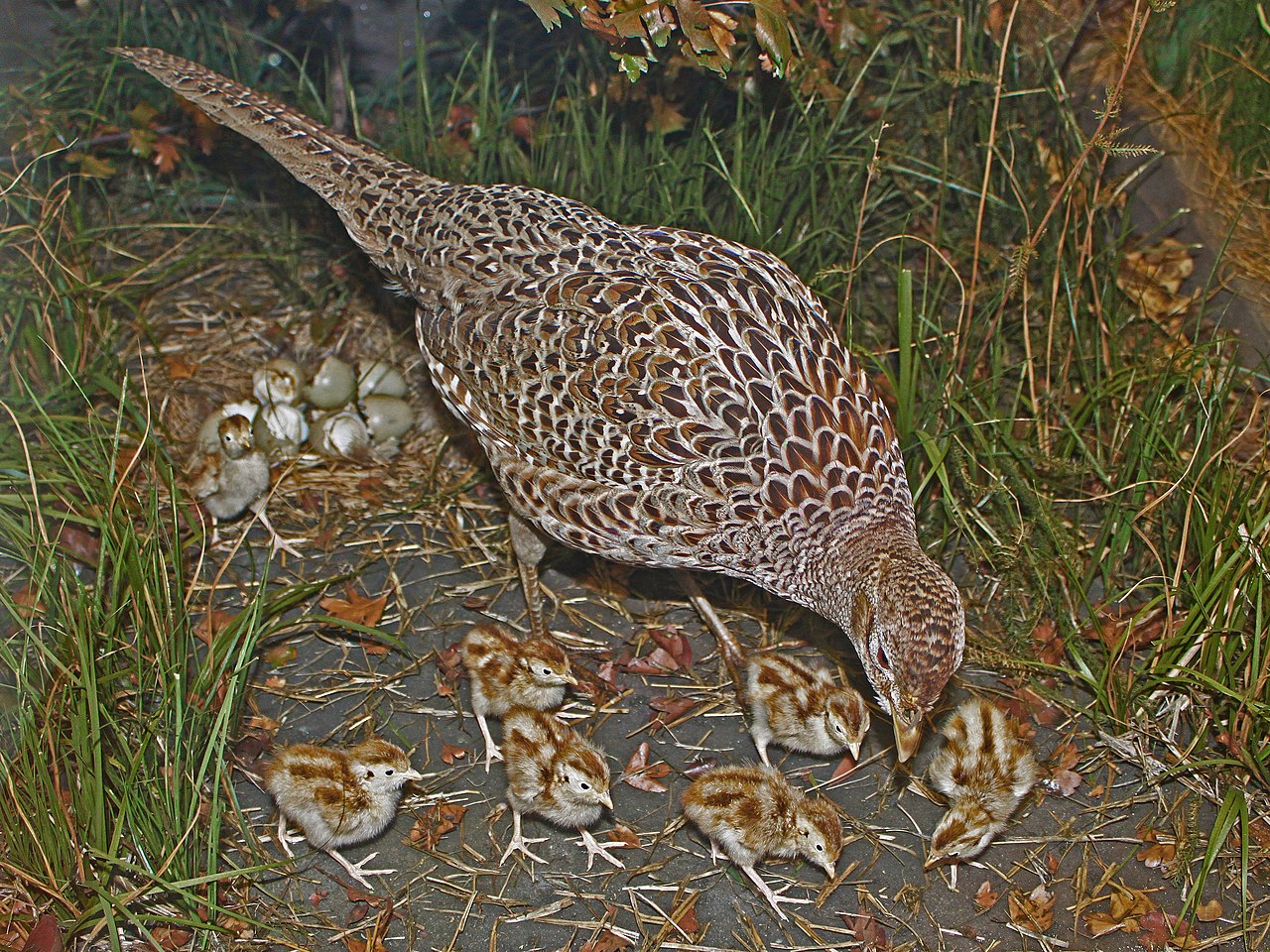Garden Wildlife
Garden Wildlife




What do they eat?
Pheasants are ground feeders and will eat practically anything, seeds, berries, fruit, invertebrates and the will dig for grubs and worms. They will take food left out on the ground and may adopt your garden if there is plenty of cover as well.
Where do they breed?
Hen pheasants build nests in dense undergrowth, including packed flower borders in gardens. They lay up to 15 eggs in a single brood, between April and September. Male pheasants consort with a harem of many females, strutting their distinctive plumage to attract the hens. Unlike song birds, the newly hatched chicks are immediately able to get up and follow the mother.
What do they do?
Hen pheasants are sensibly retiring birds, but the cocks are often very conspicuous defending their territory and generally showing off. The attrition rate of cock pheasants on our roads is considerable.
How are they doing?
There are an estimated 2.4 million feral females in the summer, but 38 million birds are released every year from October to January in the shooting season. Numbers have doubled since 1980, probably due to the growth of the shooting industry, but have been relatively stable since 2000.
Finding out more:
BTO profile on pheasant
RSPB profile on pheasant
Page written and compiled by Steve Head
Pheasant Phasianius colchicus
An unmistakeable fowl which has become feral in Britain and Ireland, with vast extra numbers released every year to be shot at by the great and the good. They are seen in 6% of gardens, where they are the poor man’s peacock. Pheasants are native to Asia, but introduced practically everywhere except Africa and south America for sport. They are in the family Phasianidae which includes chickens, turkeys and peafowl.
What do they look like?
Both sexes are big birds (71cm long) with long brown or chestnut tails with pretty horizontal bars, the feathers are ideal to stick in the band of a hat. Females are an attractive light brown with lots of flecks and spots of dark brown and are quite well camouflaged in the shade under a bush. Males are the opposite, spectacularly red and orange with a white collar, metallic dark blue neck and a bright red head.
What do they sound like?
Males have an irritable repeated “korruk-korruk”, and both sexes have a somewhat frenetic alarm call when taking off.
Call Alarm or flight call
Sonothèque ADVL, XC705942. Accessible at www.xeno-canto.org/705942.
Stanislas Wroza, XC609220. Accessible at www.xeno-canto.org/609220.
Pheasant Phasianius colchicus
An unmistakeable fowl which has become feral in Britain and Ireland, with vast extra numbers released every year to be shot at by the great and the good. They are seen in 6% of gardens, where they are the poor man’s peacock. Pheasants are native to Asia, but introduced practically everywhere except Africa and south America for sport. They are in the family Phasianidae which includes chickens, turkeys and peafowl.


What do they look like?
Both sexes are big birds (71cm long) with long brown or chestnut tails with pretty horizontal bars, the feathers are ideal to stick in the band of a hat. Females are an attractive light brown with lots of flecks and spots of dark brown and are quite well camouflaged in the shade under a bush. Males are the opposite, spectacularly red and orange with a white collar, metallic dark blue neck and a bright red head.
What do they sound like?
Males have an irritable repeated “korruk-korruk”, and both sexes have a somewhat frenetic alarm call when taking off.
Call Alarm or flight call
What do they eat?
Pheasants are ground feeders and will eat practically anything, seeds, berries, fruit, invertebrates and the will dig for grubs and worms. They will take food left out on the ground and may adopt your garden if there is plenty of cover as well.
Where do they breed?
Hen pheasants build nests in dense undergrowth, including packed flower borders in gardens. They lay up to 15 eggs in a single brood, between April and September. Male pheasants consort with a harem of many females, strutting their distinctive plumage to attract the hens. Unlike song birds, the newly hatched chicks are immediately able to get up and follow the mother.
What do they do?
Hen pheasants are sensibly retiring birds, but the cocks are often very conspicuous defending their territory and generally showing off. The attrition rate of cock pheasants on our roads is considerable.
How are they doing?
There are an estimated 2.4 million feral females in the summer, but 38 million birds are released every year from October to January in the shooting season. Numbers have doubled since 1980, probably due to the growth of the shooting industry, but have been relatively stable since 2000.
Finding out more:
Page written and compiled by Steve Head
























